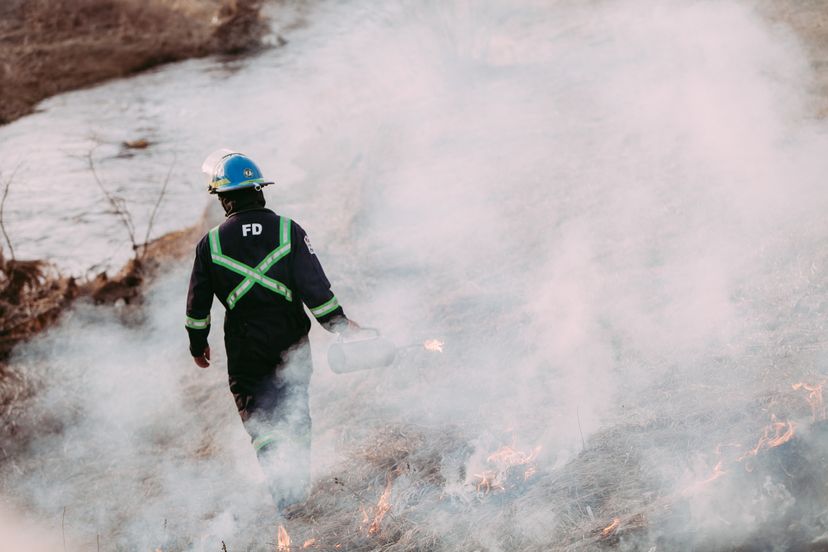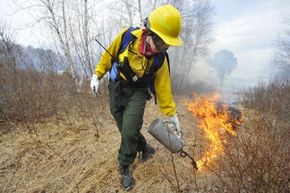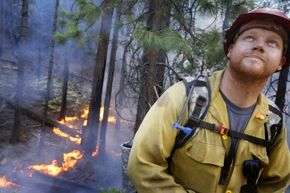Step one: They plan. They plan a lot. The "control" part of a controlled burn is key. After all, fire is a famously chaotic, destructive, often lethal force of nature. Let it get away from you, and all hell could break loose. That said, with proper planning and execution, a controlled burn should go off well.
Before the Burn
They begin by consulting the local government branch in charge of forestry. They know what regulations pertain, what permits are necessary and what time of year is best for burning in a given region. Spring is often the optimal time for controlled burning in many places since it tends to be the wettest season.
Next, whoever is conducting a burn must figure out exactly where it will take place and identify natural firebreaks (like roads or bodies of water). They will then plow, mow or bulldoze additional firebreaks where needed to contain the fire. Assembling a crew — the bigger, the better — is a must. You need people to start the fires, to control them and to put them out.
Those in charge of a controlled burn need the appropriate equipment. Drip torches are the tool of choice for lighting things up. Various kinds of water sprayers, rakes, swatters, walkie-talkies and/or cell phones are also important to have on hand. Crew members must have lots of drinking water nearby and must abstain from wearing any synthetic materials, including rubber, which can melt and stick to skin when lit. Hard hats, eye protection and respirators are also recommended.
The organizer of a controlled burn must keep a sharp eye on the weather in the days leading up to a burn. Wind speed, humidity and temperature are all important factors when it comes to ensuring a safe burn.
The Minnesota Department of Natural Resources, for instance, has recommended that burns should not take place when the wind is blowing more than 12 miles per hour (20 kilometers per hour), the humidity is under 25 percent and the temperature is above 80 degrees Fahrenheit (27 degrees Celsius).
Burn Day
Once everything is in order on a burn day, the crew often starts a small fire in a corner of the site that's downwind to see how the flames act in the given conditions. If all goes well, they can then light up something called a backfire. The backfire line is downwind against a firebreak. That means the only direction it can spread is against the wind, so it will move slowly and be easy to control.
Next comes the flank fire. As the name suggests, the flank fires are the sidelines. They burn in from their firebreaks at right angles to the wind, so they'll burn more quickly than the backfire. As the backfire and the flank fires burn, they consume the fuel in their paths, leaving an ever-widening firebreak behind them.
Once this firebreak is large enough, the crew can ignite the headfire. The headfire burns with the prevailing wind direction, meaning it burns fast. It'll finish off the controlled burn, but thanks to big firebreaks created with the backfire and flank fires, it shouldn't get out of control.
Finally, when the burn is complete, it's time to "mop up," which means extinguishing any lingering flames or embers. That can mean cutting down any trees still on fire and using water to generally drench everything that's still burning or smoking.




